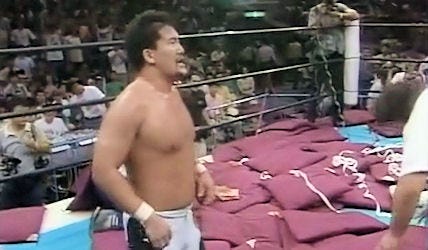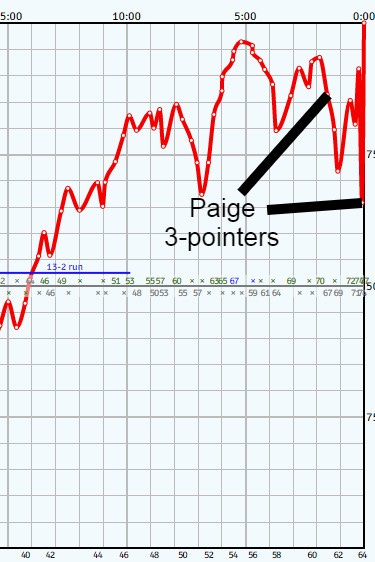Final Four Fact February: The Greatest Closing Sequence in March Madness History
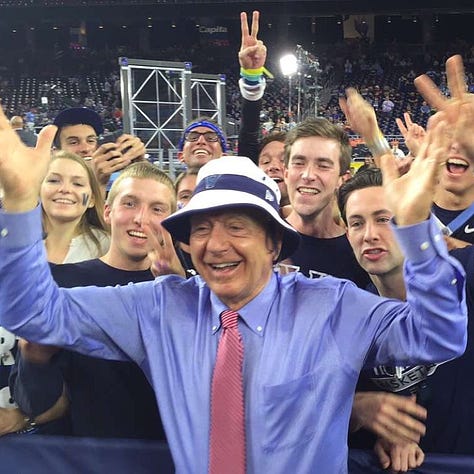
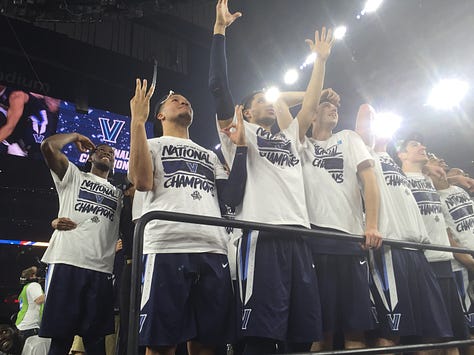
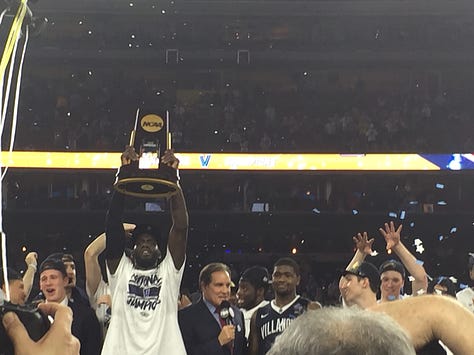
You never forget your first — and man, what a first it was.
The 2016 Final Four was the first I ever covered, marking both a career bucket-list item and fulfilling a childhood dream. Had all three games been bad — and 2-of-3 were — it wouldn’t have mattered to me.
But that the National Championship Game between Villanova and North Carolina was one for the ages makes the 2016 edition that much more special.
Kris Jenkins made the National Championship Game’s first game-winning buzzer-beater since 1983
Buzzer-beaters define March Madness, so it’s a bit surprising that the title game went 33 years between such baskets. Lorenzo Charles gained legendary status for his put-back to win North Carolina State its second championship in nine years, and for decades, that was the last buzzer-beater to cap a Tournament.
Sure, there were no shortage of memorable, pivotal, and some decisive buckets scored in late-game situations during the years between Charles’ dunk in 1983 and Kris Jenkins’ 3-pointer in 2016:
Keith Smart’s baseline jumper to sink Syracuse in 1987;
Rumeal Robinson’s foul shot that gave Michigan the lead in overtime against Seton Hall in 1989;
and then there was Mario Chalmers’ overtime-forcing bucket in 2008. Two years later, the Final Four came down to a just-missed buzzer-beater with Gordon Hayward attempting the most famous unsuccessful shot in Tournament history.
But Villanova’s Kris Jenkins made history when he took the pass from a streaking Ryan Arcidiacono and squared up for a 3-pointer as time expired, elevating the Wildcats to their first national championship since 1985.
“We knew what play we were going to at the end of the game, because we work on it every single day in practice,” Arcidiacono said following the win. “I wanted to be aggressive. If I could get a shot, I was going to shoot it. But I heard someone screaming in the back of my head. It was Kris. I just gave it to him and he let it go with confidence.”
The successful triple was Jenkins’ sixth of the Final Four and 17th of the Tournament, punctuating an impressive postseason for an unlikely March star. Jenkins struggled initially upon arriving at Villanova due to weight issues, but worked to trim down and transform into a standout wing.
Check out the story I wrote on his metamorphosis here.
You can also see my view of Jenkins’ historic shot from the media section at NRG Stadium below, which gained new relevance this week thanks to the incredibly Boomer laments of people recording LeBron James’ career-scoring record basket.


But for a more clear view of one of the most significant shots in Tournament history:
KenPom.com’s Win Probability fluctuated a combined 94.4 percentage points in the game’s final 23 seconds
Villanova went on a 13-2 run early in the second half that put the Wildcats in control per KenPom’s win-probability metrics. Nova’s advantage never waivered to Carolina’s favor after that juncture, but the fluctuation in the game’s final minute is staggering.
Marcus Paige’s game-tying 3-pointer with six seconds to go set the stage for the finale in a shot that came fractions-of-a-second away from rivaling Mario Chalmers’ in 2008.

I can only assume the North Carolina faithful who threw their seat cushions in celebration took inspiration from the inaugural edition of New Japan Pro Wrestling’s G1 Climax and the fans who showered Masahiro Chono.
Maybe not? Well, regardless, Paige’s double-clutch 3-pointer tied the score at 74, and the KenPom win probability plummeted from 91.3 percent in Villanova’s favor to 65.8, the lowest since before the Under-12 media timeout.
Prior to Paige’s improbable bucket, the Tar Heel point guard scored a layup that pulled North Carolina within a 72-71 margin with 23 seconds remaining, resulting in a five-percent drop in Villanova’s probability.
A pair of Josh Hart foul shots pushed the percentage to the 91.3 mark — which, surprisingly enough, wasn’t the high point for Villanova after the Under-4 timeout. The Wildcats held a six-point lead with less than two minutes to go before Paige connected on another 3-pointer that cut the deficit in half and lowered the Nova win probability from 93.4 percent to 86.4.
With eight points in the final 79 seconds, it’s really quite remarkable to consider just how close Marcus Paige came to being a Final Four legend.
Texas A&M’s comeback vs. Northern Iowa is the most staggering in Tournament history
In the summer of 2016 after he accepted the head-coaching position at Stephen F. Austin, I interviewed former Kansas and Texas A&M assistant Kyle Keller. One of my questions was about A&M’s comeback win over Northern Iowa in the 2nd Round of the 2016 Tournament, to which Keller responded, “That deal was divine intervention.”
Whether or not any sort of higher power played a part, the Aggies coming back from down 69-57 with 35 seconds remaining to force overtime was otherworldly.
The aforementioned KenPom win probability metric had A&M’s chances less than 1 percent for much of the final minute, even after Danuel House connected on a 3-pointer with 20 seconds remaining that pulled the Aggies to within a 69-66 margin.
A&M’s probability plummeted to 0.1 on Klint Carlson’s ensuing dunk for UNI.
However, before Los Angeles Lakers fans turned him into the living embodiment of this scene from Elvis…
…Alex Caruso was the heart of A&M making two of the most absurd comebacks in basketball history, say nothing of just March Madness.
Caruso assisted House’s 3-pointer, then followed it up with a 3-point play of his own that made the score 71-69. Admon Gilder then made a steal and layup that sent the game to overtime at 71.
Despite House scoring the first three points of OT, UNI again took control and built an 82-79 lead in the final 30 seconds before Caruso scored twice and rebounded a Panthers miss in the closing 21 seconds that sent the game to a second overtime knotted at 83.
A&M led for the entirety of double-OT en route to completing the most remarkable rally in Tournament history.
Villanova’s semifinal win over Oklahoma is the most lopsided in Final Four history
From March Madness’ biggest comeback ever to the biggest beatdown, we turn our attention back to Villanova. Blowouts rarely warrant much mentioning when reminiscing on the Big Dance, unless it’s something with historical relevance like UNLV destroying Duke in 1990 only to fall to the Blue Devils a year later.
Well, Villanova’s 95-51 deconstruction of Oklahoma in the national semifinal is indeed historically relevant: The 44-point margin is the widest in the Final Four since the Tournament’s inception in 1939.
That’s particularly noteworthy, given:
Buddy Hield had one of the best offensive Tournaments in the modern era pre-Final Four
The egg Oklahoma laid against Villanova is particularly stunning given how the game started.
Buddy Hield squared up for and knocked down a 3-pointer to open the semifinal. It was the last made 3-pointer of Hield’s college career, as he finished the game 1-of-8. Despite his struggles, however, Hield closed his 2016 NCAA Tournament with 20 made triples.
Hield’s eight made in the Elite Eight matchup with Oregon tied what was then the record for the Tournament’s second weekend. He also tied OU’s program record for most points scored in a Tournament game, just two games removed from coming one shy with 36 points in a Round of 32 defeat of VCU.
Thomas Walkup nearly made history in Stephen F. Austin’s upset win over West Virginia
Thomas Walkup was twice at the center of Stephen F. Austin NCAA Tournament upsets, first dishing the game-winning assist in the Lumberjacks’ 2014 defeat of VCU, then dropping 33 points, nine rebounds, four assists and four steals in SFA’s 70-56 romp against West Virginia in 2016.
Oklahoma’s Hield won Player of the Year honors nationally, and they were well-deserved, but a compelling case for Walkup could have been in the ‘15-’16 season. He flirted with triple-double numbers all year long as driving force of a team that won 21 consecutive games.
Far more egregious than Walkup not finishing in contention for such awards, however, was Stephen F. Austin being seeded 14th. Just atrocious work by the committee and something that, if I was a West Virginia, I’d be furious about.
The Mountaineers were essentially set up to be upset, and Walkup obliged with his performance. He approached an NCAA Tournament record in the win, making 19-of-20 free throws. Only three players in March Madness history have made more in a single game.
Bringing this full circle to the intro about the 2016 Final Four marking a special moment for me personally, I noted in the Final Four Fact February installment on 1971 that standing in the shadow of the Astrodome brought to mind memories of deciding on my future in the spring of 2001, the same weekend that “Stone Cold” Steve Austin beat The Rock for the WWF Championship at WrestleMania X-Seven.
Well, none other than the Texas Rattlesnake himself shouted out Walkup and the Lumberjacks during their 2016 Tournament run.

I got to chat with Walkup in Houston following the Reese’s All-Star Game and asked him about getting props from Stone Cold. His response can be paraphrased as giving a hearty Austin 3:16 “Hell yeah!”




